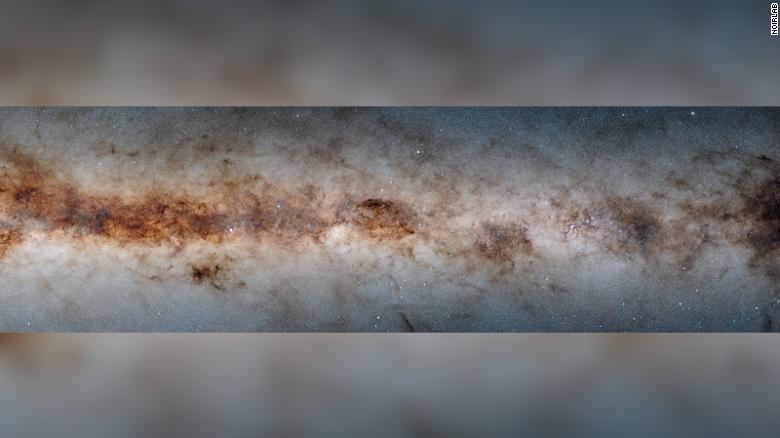By Ashley Strickland, CNN
January 19, 2023 4:43 AM EST
(CNN)-3.3 billion celestial objects have been found in the Milky Way galaxy thanks to a recent scan.
Hundreds of billions of stars, shadowy pillars of gas and dust, and brilliant stellar nurseries are all present in our galaxy. Now, thanks to the Dark Energy Camera Plane Survey, which collected 21,400 unique exposures over the course of two years, astronomers have chronicled these wonders in unparalleled detail.
The survey is the greatest collection of Milky Way objects to date and is the second data release from the programme since 2017. The information for the survey was obtained using the Dark Energy Camera, which is mounted on the Victor M. Blanco 4-meter Telescope at the Cerro Tololo Inter-American Observatory in Chile, operated by the National Science Foundation.
The telescopes there can monitor the southern sky in excellent detail across the visible and near-infrared spectrum since they are located at a height of roughly 7,200 feet (2,200 metres). 6.5% of the night sky is covered by the two data releases from the Dark Energy Camera Plane Survey. The data release will enable astronomers to more accurately trace the 3D structure of the galaxy's dust and stars.
"This is a really technical achievement. If there were a group shot of more than three billion individuals and each person could be identified, "astronomical sciences division director at the National Science Foundation, Debra Fischer, stated in a statement.
"For decades to come, astronomers will spend countless hours studying this comprehensive depiction of the Milky Way's more than three billion stars. This is a wonderful illustration of what cross-agency collaboration can accomplish."
On Wednesday, a new image of the celestial objects seen in the survey was made public. It shows stars and dust spread across the Milky Way's bright galactic disc. This plane also contains the spiral arms of the galaxy. Together, these brilliant spots make it challenging to observe the Milky Way's galactic plane, which is where the majority of its disk-shaped material is located.
Starlight is obscured by the dark dust streaks shown in the picture, and it is challenging to distinguish the distinct brightness of celestial objects due to the glow from star-forming areas.
Astronomers were able to look through the galactic plane's dust using the Dark Energy Camera, and they utilised a data-processing technique to lessen the star-forming areas' obscuring effects.
The data collection was made public in a paper that was released in the Astrophysical Journal Supplement on Wednesday.
According to lead study author Andrew Saydjari, a doctoral student at Harvard University and researcher at the Center for Astrophysics | Harvard & Smithsonian, "one of the main reasons for the success of DECaPS2 is that we simply pointed at a region with an extraordinarily high density of stars and were careful about identifying sources that appear nearly on top of each other."
In terms of the quantity of items viewed, doing so "enabled us to generate the biggest such inventory ever from a single camera."
Under the terms of a Creative Commons licence, this article has been taken from CNN. Go here to read the original article.





.jpg)



If you have any doubts, please let me know